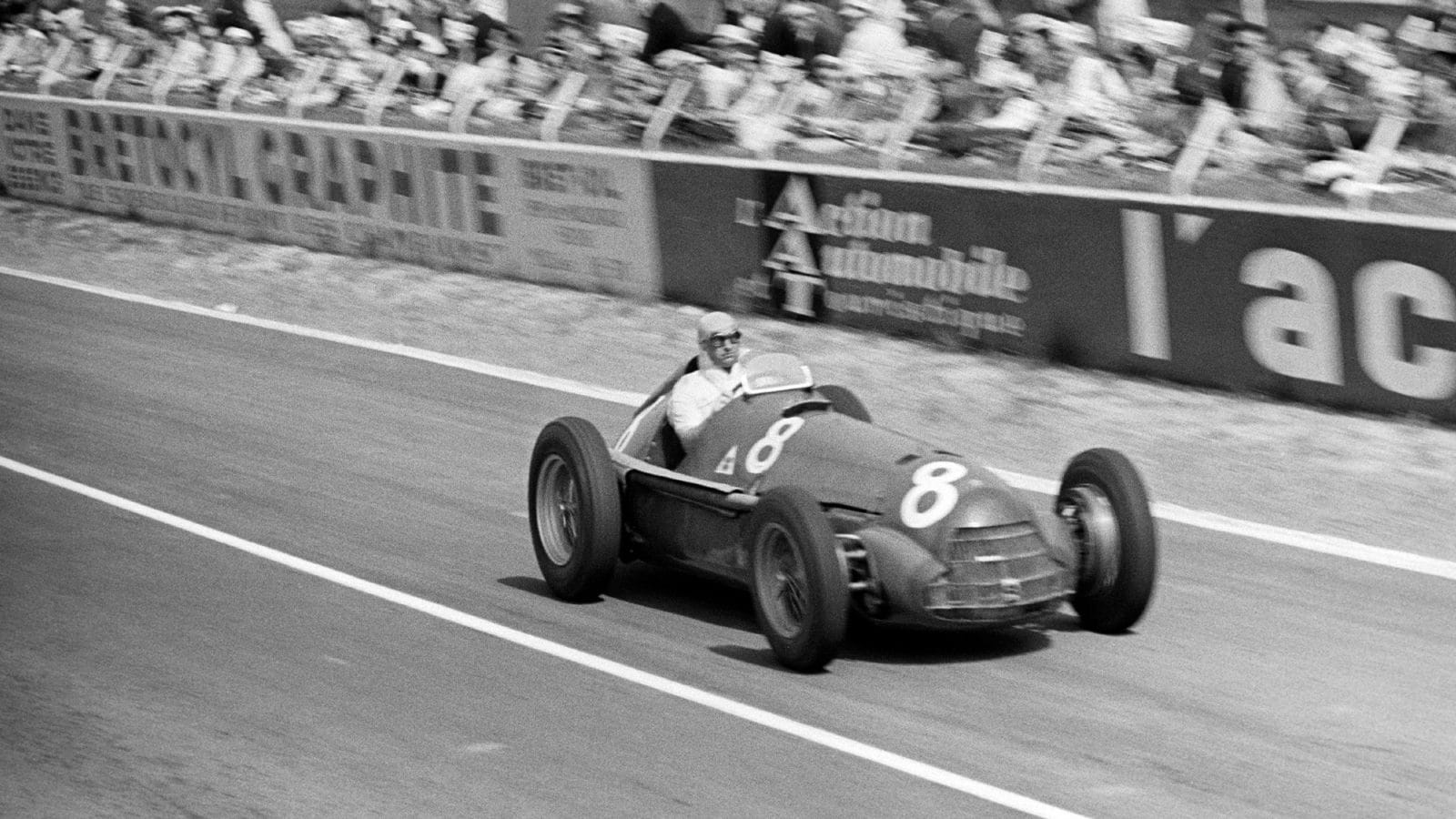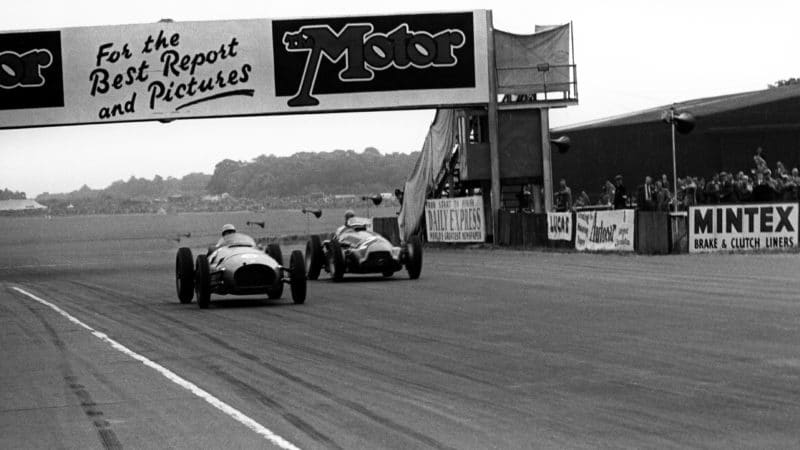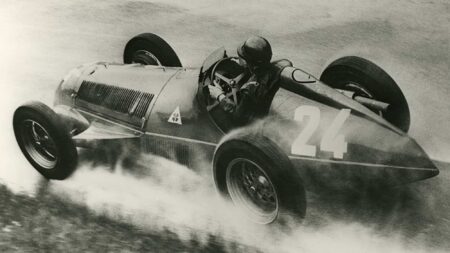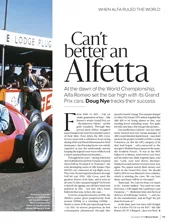The 1951 Alfas were very well made. I could rarely find one in pieces it was always difficult to see things, they would put a piece of rag over it if they saw you looking but the detail work was very nicely machined. There never seemed to be any shortage of money, for cars or drivers as we found out when we had to try and outbid them for Fangio.
I once tried to get out of Reg Parnell what the Alfa was like to drive — Alfa gave him one for the 1950 British GP as a compliment but it was suggested that he had a derated one so he didn’t break it. Or win. But it certainly didn’t do all the things the BRM did — it didn’t twitch and so on. The BRM’s trailing-arm front suspension flexed in all directions, whereas the Alfa’s was more rigid, even though it was fundamentally similar in structure. It was sorted; someone had worked it out.
I only once saw one out of the car, but the Alfa’s was a simple engine to look at, with the Roots blower along one side, sucking though a carb and a big cold-air intake. Simple, logical, somebody laid it out knowing what was going to happen to it. There was nothing in the way, you could work on the car easily. It used to take us ages to change the exhaust manifolds on the V16, and if you wanted to change the cylinder head you had to get the manifolds off first. We finally went to stub pipes and slip joints, but Alfa did that anyway. The Alfa used to have magneto problems and they had a quick-release system so they could change one quickly. Of course, the Alfetta had been raced since ’38 and was a very successful and well-sorted car.
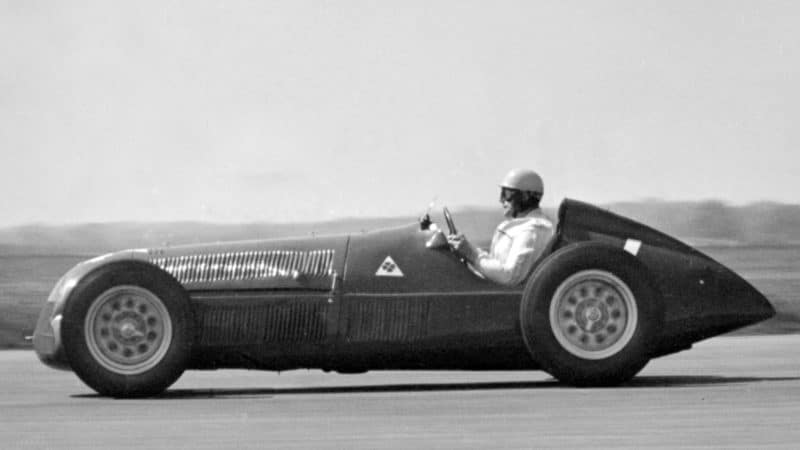
Parnell was given an Alfa drive in the 1950 British GP
National Motor Museum/Getty Images
You couldn’t say it was sophisticated; it was simple, even brutal, with fuel tanks everywhere — it carried 80 gallons. There was no provision for camber change, only ride-height adjustment. We hadn’t provided much at first, either, but eventually we did. We only carried about 70 gallons because our consumption was better — about 1.8mpg. You could see these cars sink on their suspension during fuelling, since they would put 70 gallons in at a pitstop; we used to put 50-60 in — if we got that far. They used fuel barrels pressurised with gas, while we used a pump powered by a Norton motorbike engine. Fangio told me the Alfa was pretty good with all the fuel in.
